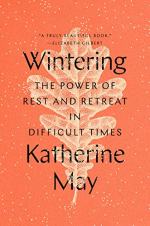|
This section contains 1,538 words (approx. 4 pages at 400 words per page) |

|
What are the literal and metaphorical values of winter? What physical and/or psycho-emotional experiences does the term suggest? What might be some of the relationships / interactions between the two sorts of experiences?
This question asks readers to engage, critically and thoughtfully, with the perspectives on winter and “wintering” offered and considered by the author. Literal experiences of winter can include those involving cold, isolation, and depression, as well as seasonally unique opportunities for celebration, bonding, and different types of outdoor activity. Also in the mix are concepts associated with hibernation, with lack of light / shortness of days, and with little presence of green-ness, or growth. Possible psycho-emotional experiences associated with all these elements include the importance of safety (i.e., protection from the elements), the potential for contemplation, and the gathering of inner resources in preparation for periods of growth and renewal (i.e., springtime).
In the Prologue (“September”), May refers to “Change was happening” in company with “its cousin, mortality” (8). What does this mean? How does this relate to common literal and/or metaphoric considerations of winter?
|
This section contains 1,538 words (approx. 4 pages at 400 words per page) |

|



